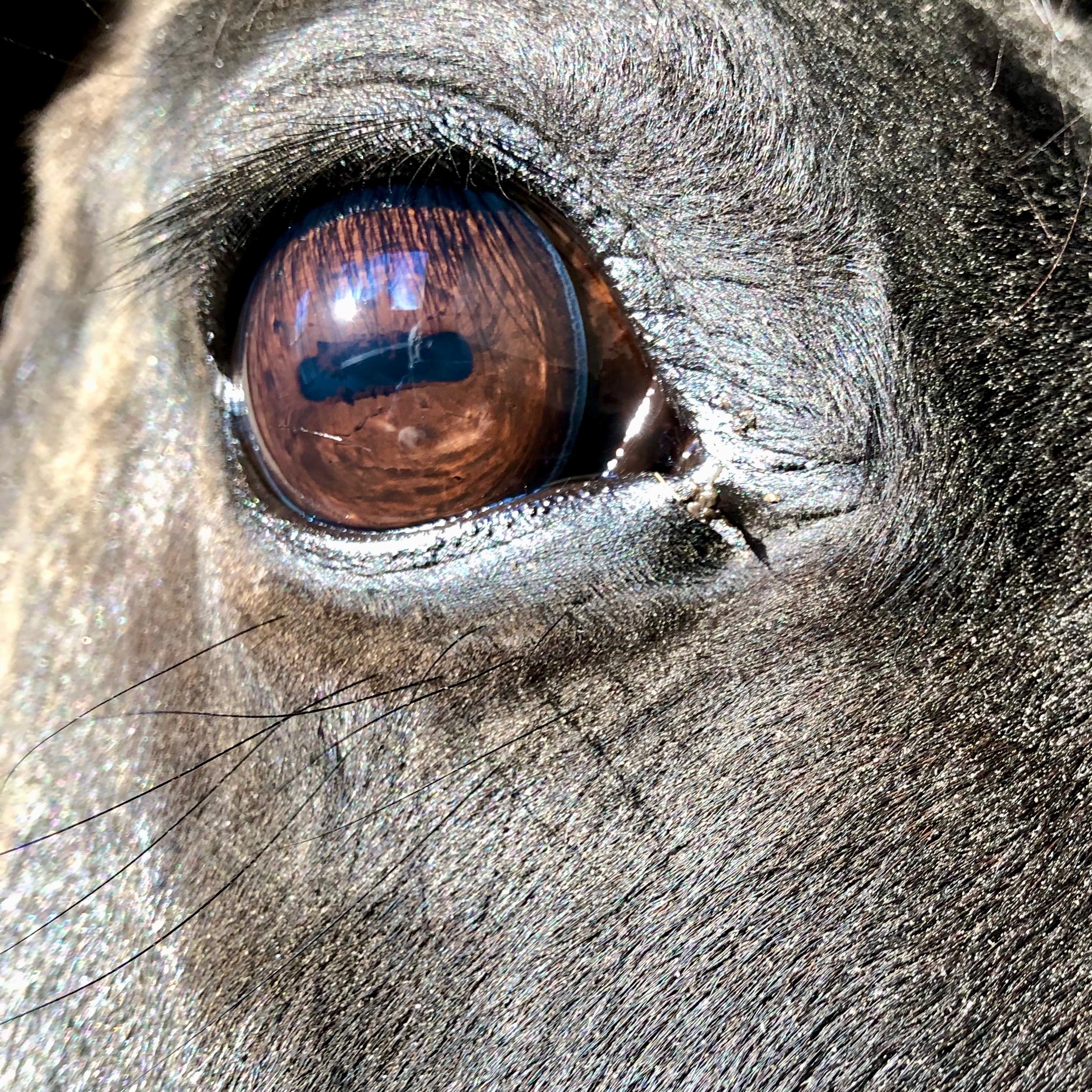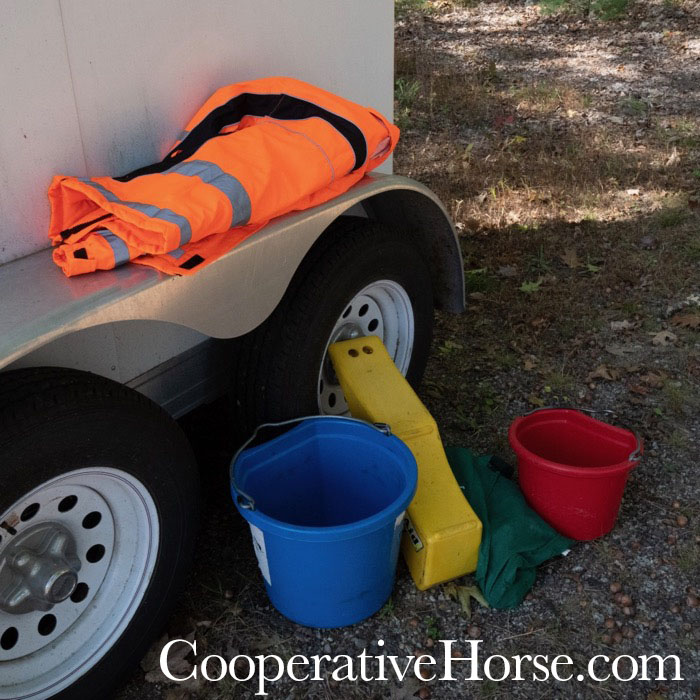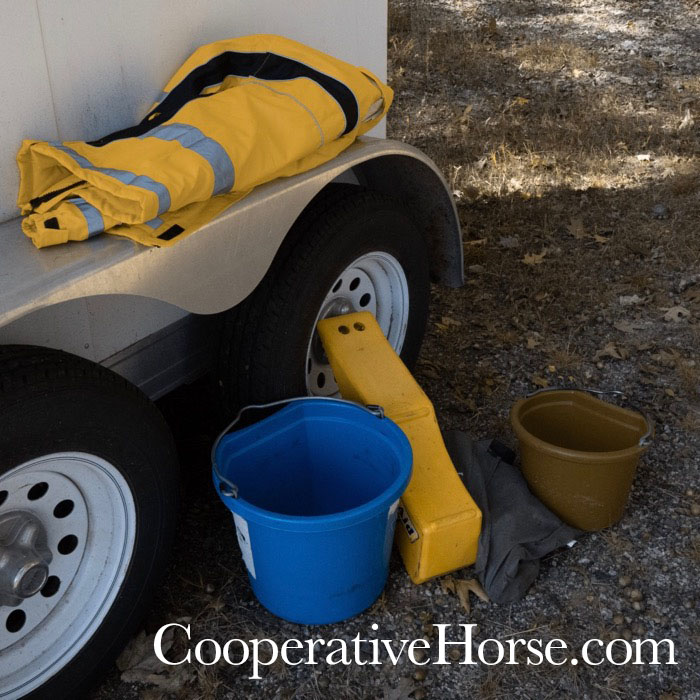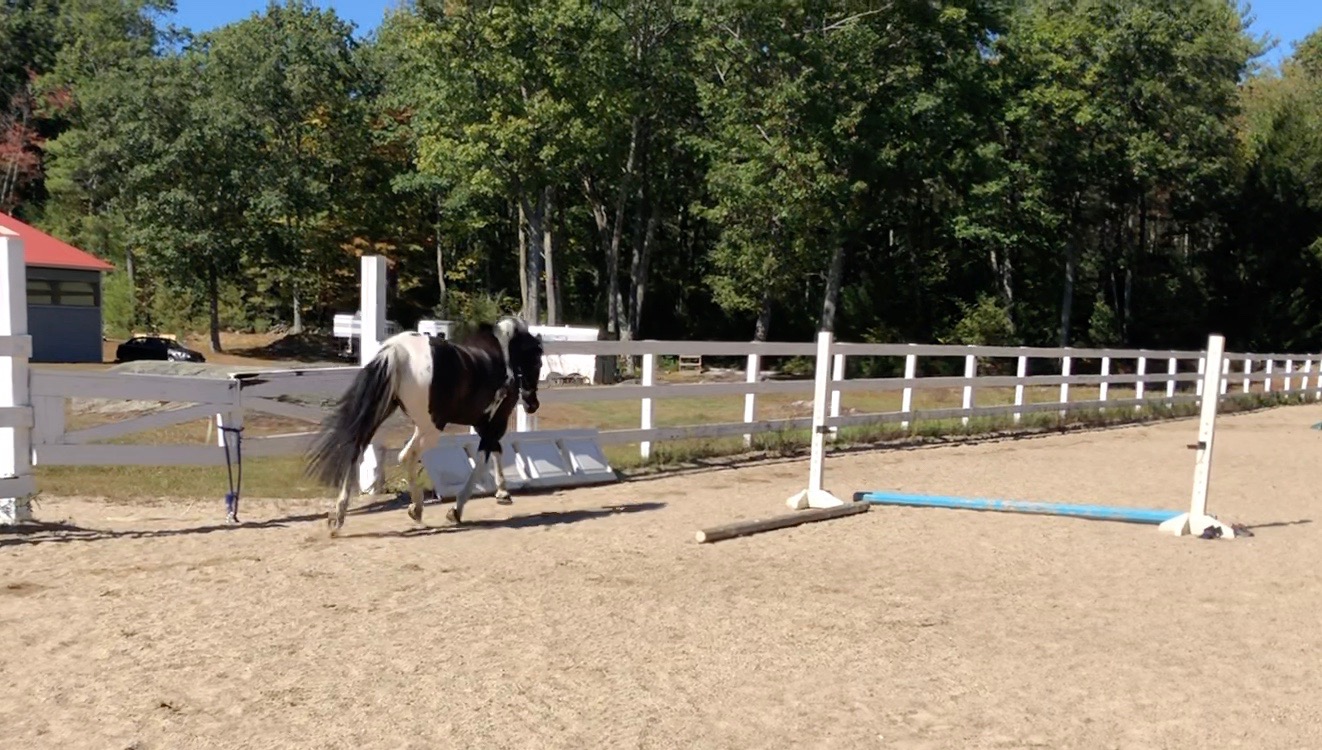Note: This is one article in a series about horse vision. I’ve compiled all of them, including more information and references, in this blogpost: Horse Vision.
Horses evolved to live in wide-open, mostly monotone landscapes. Unlike humans, they didn’t need color to determine what was ripe and edible. Their food was at their hooves, and they used their whiskers to feel what was good to eat. What they did need to see were predators, which had evolved to blend into the background. To detect danger, horses needed to be able to discern slight changes in texture (the fur of a puma is different than grass), luminance (brightness) and motion. To maximize those abilities the horse’s eye developed differently than ours. This blogpost is about color, so I’ll just focus on that (pun not intended, but, yay!) and will discuss other aspects of the horse’s sight in future posts.

Studying eye anatomy helps us to understand what a horse’s vision is capable of. The human eye has cone photoreceptors. Among other things, cones detect color. Horses have few of those. They mostly have rods, which don’t register color, but that do enable the horse to see in low-light situations. For an animal that grazes 24/7, and that needs to see predators even at night, having rods makes sense.
Scientists also understand sight by counting nerves, seeing where they’re clustered and what part of the brain they light up. They can compare one species to another. They can also ask the horse! Horses can be trained to let us know whether they can see something (for example, if they can distinguish a line on a card, they touch their nose to a target for a reward.) All of these studies, put together, give us a pretty good idea of what a horse sees. But, of course, it’s only an idea. The brain remains a mysterious organ and interprets what the nerves tell it.
To the best of current research it’s believed that horses have limited color vision. White is quite bright (luminance!) Yellow and blue are the two colors that horses easily distinguish (although some research indicates that blue lacks clarity and that things that are blue are blurry.) For the horse, orange is the same as yellow. The color that is so important to us – red – blends brown into the background. As does green.
This is what the human sees:

Here is what the horse sees.

Color is so important to us humans that it’s hard to imagine life without it. Color is the thing that pops first into our consciousness and that draws our attention. So even though we know that horses have limited color vision it still surprises us when they don’t care about or notice what we do. That hot pink discarded dog squeaky toy lying in the grass that we think should startle them? Nothing. A dull old green garden hose that is barely noticeable to you in the grass? Yikes! The horse sees it distinctly. A white plastic fence they’ve seen day in and day out, that happens to be shining in the sun – terror!

Unlike that garden hose or the squeaky toy, a flat white surface lacks the textural clues that tells a horse what it is. A horse’s eyes take in more light than ours, and registers brilliance in a more magnified way than ours do. This is why a white fence is often the bugaboo in a course. They’re scarier and easier to misjudge. Colorful jumps might make us nervous – their design looks complicated and confusing to our eyes, but they’re not so disorienting to a horse. It’s the white and shiny fences that are. That’s why, if you take a corner too tight coming into a white gate, you’ll have more of a disaster than if it was a plain natural fence or one painted with red and green diamonds!
A friend very kindly let me share this example of what happens at the white fence when the line into it is too tight so the horse hasn’t had a chance to understand what they’re seeing.
So, all of those jokes about terrifying plastic bags and how silly our horses are? If you had their eyesight, that plastic bag would scare you too. It’s shiny, lacks texture, and it moves erratically. Giving the horse a chance to look and understand what they’re seeing takes their anxiety down a notch. Over time, gently exposing them to such things in a non-confrontational way will give them experiences with those objects that will change their attitude from wary to blasé. But you’ll still need to ride a clear line into a shiny white fence!
If you want to geek out on the science of horse sight, this article is a great starting point: What Horses and Humans See: A Comparative Review.


That is so interesting. My husband is colour blind ( English spelling from me! ) and doesn’t see greens and reds which is the most common form of colour blindness. He sees them as brown. It is much more common in males too. He likes yellow because it stands out for him. I am now thinking that he has a lot in common with horses as far as colour sight goes. Because of his colour blindness it has always been something that interests me. I love your informative posts as well as your fun ones of course!
The article you published, regarding horse eyes and vision, is really excellent. I had no idea how different their vision is from ours, and how subtle differences make things hard on the horses. Easy to see grass. Difficult to see things that are easy for us, and hard for what horses need to see. It’s interesting to see how people totally don’t make it easy for horses to see, for example, white-painted wooden jumps. This is a wide ranging and thorough paper and I’m glad to have had a chance to read it.
Karen Pryor
I showed my husband the two photos and he said that both photos looked the same to him. He couldn’t see any green or red or distinguish the orange from the yellow but said that, what I told him was the green cloth, showed up slightly better in the second photo. He definitely has a lot in common with a horses colour sight.
That is so interesting! Does he have excellent night vision?
I don’t think so. Sometimes if something like a paint job has been done on a car he will pick out a slight difference in shade that I don’t notice until it’s pointed out and yet he can’t tell a red car from a green one on the television. He also sees things as he expects to see them so if I tell him someone on television has bright red or green hair he would never know. He would expect it to be brown and is surprised when I tell him it isn’t.
This is very interesting and informative. Thank you very much for taking the time to research and post the facts about what colors horses can see.
You’re welcome! It’s been fascinating to learn about.
Please add me to new article notifications! This was so educational! Thank you!
Glad you found it helpful! On the right-hand side of this page is a place to sign up for all of my blogposts. You can follow my on FaceBook, too. However, FaceBook doesn’t always put my posts in everyone’s feeds – even if you are “following” me.